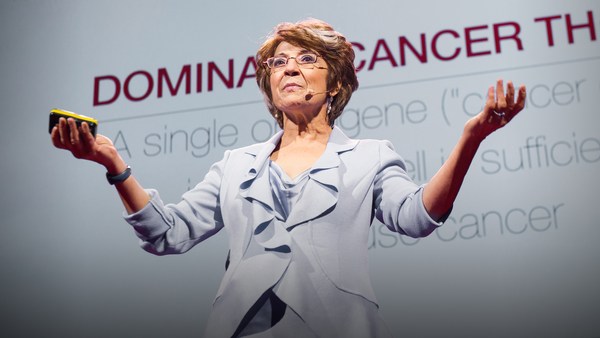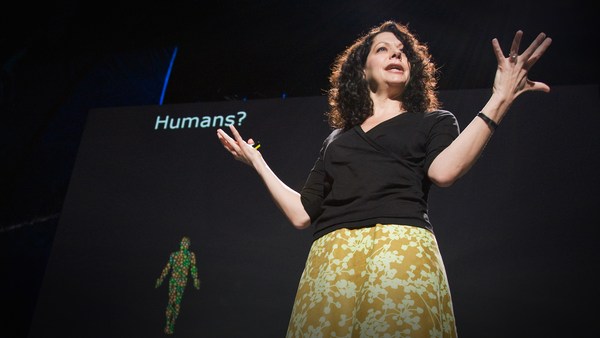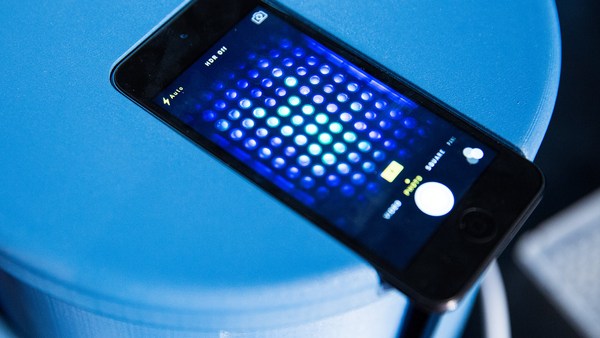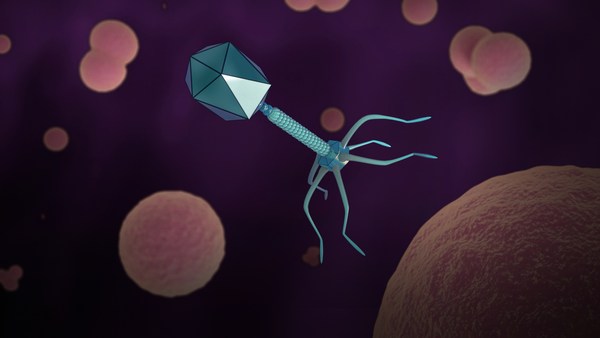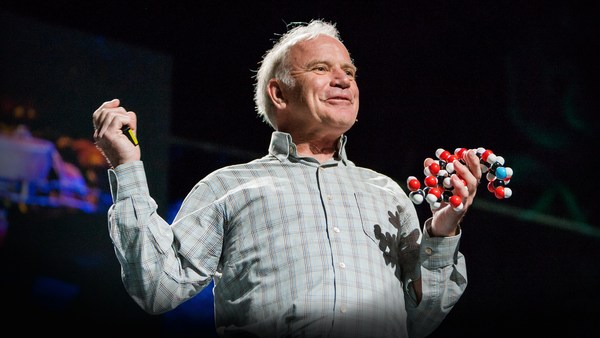You may not realize this, but there are more bacteria in your body than stars in our entire galaxy. This fascinating universe of bacteria inside of us is an integral part of our health, and our technology is evolving so rapidly that today we can program these bacteria like we program computers.
Now, the diagram that you see here, I know it looks like some kind of sports play, but it is actually a blueprint of the first bacterial program I developed. And like writing software, we can print and write DNA into different algorithms and programs inside of bacteria. What this program does is produces fluorescent proteins in a rhythmic fashion and generates a small molecule that allows bacteria to communicate and synchronize, as you're seeing in this movie. The growing colony of bacteria that you see here is about the width of a human hair. Now, what you can't see is that our genetic program instructs these bacteria to each produce small molecules, and these molecules travel between the thousands of individual bacteria telling them when to turn on and off. And the bacteria synchronize quite well at this scale, but because the molecule that synchronizes them together can only travel so fast, in larger colonies of bacteria, this results in traveling waves between bacteria that are far away from each other, and you can see these waves going from right to left across the screen.
Now, our genetic program relies on a natural phenomenon called quorum sensing, in which bacteria trigger coordinated and sometimes virulent behaviors once they reach a critical density. You can observe quorum sensing in action in this movie, where a growing colony of bacteria only begins to glow once it reaches a high or critical density. Our genetic program continues producing these rhythmic patterns of fluorescent proteins as the colony grows outwards. This particular movie and experiment we call The Supernova, because it looks like an exploding star.
Now, besides programming these beautiful patterns, I wondered, what else can we get these bacteria to do? And I decided to explore how we can program bacteria to detect and treat diseases in our bodies like cancer. One of the surprising facts about bacteria is that they can naturally grow inside of tumors. This happens because typically tumors are areas where the immune system has no access, and so bacteria find these tumors and use them as a safe haven to grow and thrive. We started using probiotic bacteria which are safe bacteria that have a health benefit, and found that when orally delivered to mice, these probiotics would selectively grow inside of liver tumors. We realized that the most convenient way to highlight the presence of the probiotics, and hence, the presence of the tumors, was to get these bacteria to produce a signal that would be detectable in the urine, and so we specifically programmed these probiotics to make a molecule that would change the color of your urine to indicate the presence of cancer. We went on to show that this technology could sensitively and specifically detect liver cancer, one that is challenging to detect otherwise.
Now, since these bacteria specifically localize to tumors, we've been programming them to not only detect cancer but also to treat cancer by producing therapeutic molecules from within the tumor environment that shrink the existing tumors, and we've been doing this using quorum sensing programs like you saw in the previous movies.
Altogether, imagine in the future taking a programmed probiotic that could detect and treat cancer, or even other diseases. Our ability to program bacteria and program life opens up new horizons in cancer research, and to share this vision, I worked with artist Vik Muniz to create the symbol of the universe, made entirely out of bacteria or cancer cells. Ultimately, my hope is that the beauty and purpose of this microscopic universe can inspire new and creative approaches for the future of cancer research.
Thank you.
(Applause)
